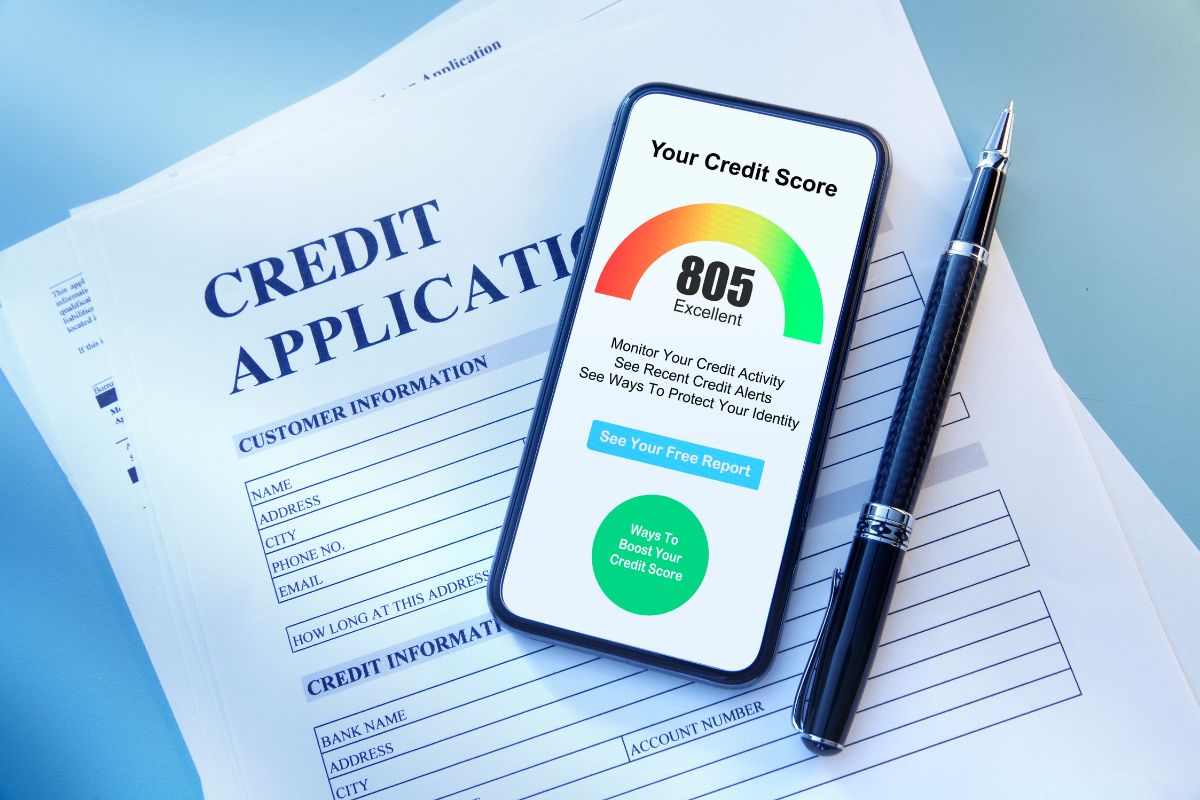Thinking about refinancing your mortgage? It’s a big step that can lead to lower interest rates and smaller monthly payments. You might also get to use your home’s equity. But, it’s important to know the risks too, like taking on more debt or affecting your credit score. This guide will cover the good and bad sides of refinancing your home loan.
Refinancing can help you reach your financial goals, like boosting your credit score or saving money over time. With careful planning, it can be a smart choice that benefits you in the long run. Let’s explore the details to help you decide wisely.
Key Takeaways
- Refinancing your mortgage typically incurs closing costs ranging from 2% to 6% of the new loan amount.
- Potential savings from refinancing are often considered beneficial if the new rate is at least 0.5% lower than the current rate.
- Refinancing to a shorter loan term can lead to saving on interest over time and paying off the mortgage faster.
- A good credit score for refinancing is generally considered a FICO score of 670 or higher.
- Cash-out refinancing allows you to borrow against your home equity for major expenses like debt consolidation or home improvements.
- Refinancing from adjustable-rate to fixed-rate mortgages can provide stability and predictability in monthly payments.
What is Mortgage Refinancing?
Mortgage refinancing means getting a new loan to replace your old one. You might want a lower interest rate, a different loan term, or to use your home’s equity. If done right, it can save you a lot of money.
Understanding the Concept
Refinancing your mortgage means paying off your current loan with a new one. This can lead to saving $500 to $1,000 each month on your mortgage. You’ll need about $5,000 for closing costs, according to Freddie Mac. Also, consider the UFB Secure Savings account for extra savings with up to 5.25% APY.
How Does It Differ from a Regular Mortgage?
A regular mortgage is the loan you get to buy a home. Refinancing is when you look at your current loan’s terms and change them. Refinancing can give you a lower interest rate or make your payments more stable.
It can also let you switch from an adjustable-rate to a fixed-rate mortgage. Or, you can use a cash-out refinance to get cash for other things.
Knowing the basics of mortgage refinancing can help you make the most of it.
Why Consider Refinancing Your Mortgage?

Refinancing your mortgage can be a smart move, offering many benefits based on your situation and goals. It’s key to look at the refinancing benefits and how mortgage rate trends and market conditions might affect your plans.
Financial Goals and Benefits
One big reason to refinance is to get lower interest rates, which can save you a lot over time. For example, switching to a 15-year mortgage from a 30-year one can cut your repayment time in half and save you thousands. Refinancing can also lower your monthly payments or remove private mortgage insurance (PMI) if you have enough home equity.
Many homeowners refinance as part of a larger financial strategy. A cash-out refinance lets you use your home’s equity for big expenses like paying off debt, improving your home, or covering education costs. But remember, you’ll need good credit and a healthy debt-to-income ratio for the best deals.
Changing Market Conditions
Market conditions and mortgage rate trends play a big role in your refinancing decision. If rates are low, refinancing from an adjustable-rate to a fixed-rate mortgage can make your payments more predictable. Taking advantage of low rates can also lower your loan costs and increase your financial flexibility.
The cost of refinancing is another important factor. Closing costs usually range from 2% to 6% of the loan amount, so a $200,000 mortgage could have fees of $6,000 to $12,000. These costs can impact your savings, so it’s important to plan carefully. Refinancing typically takes 30 to 45 days, so be patient and strategic.
| Factor | Description |
|---|---|
| Interest Rate Savings | Potentially save thousands over the loan’s life by reducing interest rates. |
| Monthly Payment Reduction | Lower monthly mortgage payments due to better rates or longer loan terms. |
| Equity Access | Through cash-out refinance, access funds for debt consolidation, home improvement, etc. |
| Eliminating PMI | Achieve savings by removing private mortgage insurance if home equity exceeds 20%. |
| Cost of Refinancing | Closing costs can be between 2% and 6% of the new loan amount, affecting total savings. |
Pros of Mortgage Refinancing
Mortgage refinancing has many benefits that can improve your finances and flexibility. It helps you get lower interest rates, reduce monthly payments, and eliminate Private Mortgage Insurance (PMI). You can also use cash-out refinance benefits for various needs.
Lower Interest Rates
Getting lower interest rates is a big plus of refinancing. Switching to a 15-year mortgage instead of a 30-year one can save you a lot of money. For example, going from a 4% to a 3.5% rate on a $250,000 mortgage saves you $25,534 over the loan’s life.
Lower rates mean more money saved and faster home equity growth. This gives you more financial flexibility.
Reducing Monthly Payments
Refinancing can also lower your monthly payments. Choosing a longer loan term can make your payments smaller, even if you pay more interest over time. A small drop in interest rates can save you hundreds each year.
This means you’ll have more money each month for other bills or savings.
Eliminating Private Mortgage Insurance (PMI)
Refinancing can also help you stop paying PMI, which is great when you have 20% equity in your home. Not paying PMI can save you a lot of money each month. This makes your mortgage payments more manageable over time.
Cash-Out Options
With cash-out refinancing, you can use your home’s equity for things like fixing up your home, paying off debt, or investing. This lets you get cash from your home’s value. But, remember, it might increase your monthly payments and could require PMI if your equity drops below 80%.
Still, cash-out refinancing is a strong way to get the funds you need.
Cons of Mortgage Refinancing
Refinancing your mortgage can have big benefits, but it also has some drawbacks. These can affect your finances. It’s key to think them over before you decide to refinance.
Closing Costs
One big drawback is the mortgage refinance closing costs. These costs can be 2% to 6% of the new loan’s amount. You’ll pay for origination fees, home appraisal costs, title insurance, and credit report fees. These add up and might erase the savings from a lower monthly payment.
| Cost Type | Typical Range (as % of Loan Amount) |
|---|---|
| Origination Fees | 1% to 2% |
| Home Appraisal Costs | 0.5% to 1% |
| Title Insurance | 0.5% to 1% |
| Credit Report Fees | 0.25% to 0.5% |
Impact on Credit Score
Refinancing also affects your credit implications. Lenders will do a hard inquiry on your credit report, which can lower your score. Also, opening and closing accounts during refinancing can hurt your credit history.
Longer Loan Terms
Refinancing often means longer loan terms, which can reset the payback period. This can make your monthly payments lower, but you might pay more interest over time. In fact, 40% of homeowners who refinance end up paying more in interest.
Extending your loan with a new 30-year mortgage means you could pay a lot more interest. This is true even if you get a lower interest rate.
Here’s a closer look at some implications of longer loan terms:
- Potential increase in total interest costs
- Prolonged financial commitment
- Possible reset of mortgage terms
For instance, refinancing an existing mortgage with total interest costs of $184,356.61 to a new 30-year loan might result in total interest of $199,916.59. Despite lower monthly payments. Understanding these refinancing drawbacks helps you make a smart choice that fits your financial goals.
Eligibility Requirements for Refinancing

Refinancing your mortgage can bring many financial benefits. But, it’s key to know the rules before you start. These rules help you get the most from the savings and better loan terms.
Credit Score Considerations
Your credit score is very important for refinancing. A higher score means better terms. Here are some important points:
- For a conventional refinance, you need a credit score of 620 or higher.
- FHA refinances need a score of 580 or more, but lenders might ask for more.
- VA loans usually want a score of 580 or above.
- Jumbo refinances require a score of 680 or better.
A good credit score helps you get approved and can lower your interest rates. Try to get a FICO score of 670 or above for the best deals.
Home Equity Requirements
How much equity you have in your home is also key for refinancing. Lenders like it when you have at least 20% equity. This equity helps you qualify and can remove Private Mortgage Insurance (PMI).
| Loan Type | Minimum Credit Score | Maximum Loan-to-Value (LTV) Ratio | Income Verification | Appraisal Required |
|---|---|---|---|---|
| Conventional Refinance | 620 | 75% – 95% | Yes | Yes |
| FHA Refinance | 580 | 80% – 97.75% | Yes | Yes |
| VA Refinance | 580 | 100% | Yes | Yes |
| Jumbo Refinance | 680 | 70% – 89.99% | Yes | Yes |
| Conventional Cash-Out Refinance | 620 | 80% | Yes | Yes |
| FHA Cash-Out Refinance | 580 | 80% | Yes | Yes |
| VA Cash-Out Refinance | 620 | 90% | Yes | Yes |
Even with less than 20% equity, some lenders might say yes to your refinance. But, you might get a higher interest rate or need mortgage insurance. Always think about this carefully before refinancing.
Steps to Refinance Your Mortgage
Refinancing your mortgage means going through several important steps. These steps help you get the best terms for your money needs. You’ll need to check your finances and compare offers from different lenders. Each step is key to doing the refinance right.
Evaluating Your Financial Situation
Before starting the refinance, you must review your finances carefully. Look at your credit score, home equity, and financial health. A good credit score can lead to better loan terms and lower rates. Knowing your finances well helps you make smart choices during the refinance.
Comparing Lenders and Offers
It’s vital to compare mortgage rates and offers from different lenders. This can save you a lot of money over time.
| Lender | Min. Credit Score | Min. Down Payment |
|---|---|---|
| Rocket Mortgage | 580 | 3.5% |
| Better | 620 | 3% |
| New American Funding | 580 | 3% |
| Guaranteed Rate | 620 | 3% |
| First Federal Bank | 640 | — |
| Spring EQ | 640 | — |
| Figure | 640 | — |
Take time to look at different lenders to find the best rates and terms. Tools like the NerdWallet ratings can help by giving insights into mortgage options.
Submitting Your Application
After picking a lender, it’s time to apply for refinance. You’ll need to share financial info like income, credit history, and your home’s value. Lenders will check your property’s value to see how much equity you have. Make sure your application is accurate and complete for a smooth refinance.
Follow these steps carefully, and you’ll refinance your mortgage well. Each step is a chance to improve your finances and save money.
Understanding the Costs Involved

When you look into mortgage refinancing, knowing all the costs is key. This ensures you make a smart choice. Unexpected costs can greatly affect your financial plan and the benefits of refinancing.
Typical Closing Costs
Mortgage refinancing has several costs you should know about. These include appraisal fees, origination fees, and attorney costs. Appraisal fees pay for a professional to value your home. Origination fees are for the lender to process your loan. Attorney costs handle the legal parts of refinancing.
It’s important to understand these fees to know what you’ll need upfront. These fees usually are 2% to 5% of the loan amount. So, make sure to plan your budget for this.
Calculating Your Break-Even Point
Doing a break-even analysis is key in refinancing. It shows how long it takes for your savings to cover the refinance costs. To figure this out, divide your total refinance fees by how much you save monthly on your mortgage.
For instance, if your fees are $5,000 and you save $200 a month, you’ll break even in 25 months ($5,000 / $200 = 25). Knowing this helps you see if refinancing fits your financial plans.
Understanding these key points about mortgage refinancing fees helps you feel more confident in your choices. Always be careful and talk to a mortgage advisor to make sure refinancing works for you.
Types of Mortgage Refinancing
Exploring different refinance options can help you make smart choices for your money goals. It’s key to know the differences between rate-and-term refinancing and cash-out refinancing. This knowledge helps you pick the right option for your financial plans.
Rate-and-Term Refinancing
Rate-and-term refinancing is a popular choice for borrowers. It changes the interest rate or loan term. This is great if you want to get rate-and-term benefits. It lets you get lower interest rates or change your payment schedule without changing the loan amount.
- Lower Interest Rates: You can lock in a lower rate, which means lower interest payments.
- Shorter Loan Terms: Choosing a shorter term can save you money on interest over the loan’s life.
- Extended Terms: Longer terms mean smaller monthly payments but more interest paid overall.
Rate-and-term refinancing can cost about $2,375 in closing costs, says ClosingCorp. On average, it takes around 42 days to complete, according to ICE Mortgage Technology.
Cash-Out Refinancing
If you want to use your home’s equity for cash, consider cash-out refinancing. This involves refinancing your mortgage for more than the original loan amount and getting cash back. The main benefits are:
- Access to Cash: Use your home’s equity for big expenses like home improvements, education, or paying off debt.
- Flexible Terms: Like rate-and-term refinances, cash-out refinances can adjust interest rates and terms.
- Equity Utilization: With home values rising, you might have more equity to use than you thought.
Cash-out refinancing gives you cash but comes with higher closing costs and possible changes in loan terms. Refinancing is a good idea when interest rates drop, making both options more appealing.
| Refinance Type | Main Features | Typical Closing Costs | Average Time to Close |
|---|---|---|---|
| Rate-and-Term Refinancing | Changing interest rate or loan term without altering balance | $2,375 | 42 days |
| Cash-Out Refinancing | Refinancing for a larger loan amount to secure cash | Higher than rate-and-term | 42 to 60 days |
Choosing the right refinance option depends on how it fits your financial goals and current mortgage. Understanding the rate-and-term benefits and the cash-out refinancing strategy helps you make smart decisions. This way, you can move closer to financial stability.
Impact of Refinancing on Your Financial Health
Refinancing your mortgage can deeply affect your financial health. It’s key to understand both the short-term relief and refinance long-term effects. Lower monthly payments can give you more flexibility right away. But, longer loan terms might mean paying more interest over time.
The cost of refinancing usually falls between 3% to 6% of the loan’s principal. This includes various fees and closing costs. You need to balance these costs against the savings from the new loan rate. Knowing when refinancing will pay off in the long run is crucial.
Comparative analysis can help:
| Factors | Details |
|---|---|
| Typical Closing Costs | 2% to 3% of your home loan amount |
| Prepayment Penalties | Potential penalties depending on the loan terms |
| Credit Score Impact | Temporary lowering due to credit checks |
| Monthly Payment Reduction Threshold | 0.75% to 1% interest rate reduction could make refinancing viable |
| Breakeven Calculation | Divide total loan costs by monthly payment savings |
For those aiming for mortgage stability, switching from an adjustable-rate mortgage (ARM) to a fixed-rate mortgage offers steady payments. But, it requires careful thought about costs. Refinancing to consolidate debt can also increase your debt if you’re not careful with your budget.
It’s vital to weigh the pros and cons of refinancing. Lower monthly payments can ease your budget now. But, longer loan terms mean paying more interest over time. So, make sure refinancing fits your financial goals and long-term stability.
Real-Life Scenarios: When Refinancing Makes Sense
Knowing when to refinance your mortgage is key to improving your finances. Life events often guide when it’s the right time to make such big decisions.
High Interest Rates on Existing Loan
If your current mortgage has a high interest rate, refinancing could save you a lot. For example, a one percent drop in rate could save you $257 monthly on a $400,000 loan. Refinancing for a 0.5% lower rate could save you about $122 monthly. A 0.25% drop on a $500,000 mortgage at 4.5% could save you $324 monthly, adding up to over $19,000 in five years.
Recent stats show a big trend in refinancing. Over 25 years, borrowers usually refinance every 3.6 years. This means checking interest rates often is key to finding savings. It takes about 6 years and 8 months to break even on refinancing costs, highlighting the importance of careful financial planning.
Major Life Events
Big life changes like marriage, job shifts, or having more kids often mean rethinking your mortgage. These events might lead you to refinance for better financial fit. For example, a new job could let you refinance to a shorter loan, building equity quicker. Or, having more kids might mean needing more money, making a cash-out refinance a good choice.
From April 2019 to August 2020, refinancing a conventional mortgage took 38 to 48 days on average. FHA or VA-backed loans took a week longer. So, planning your refinance around life events is key to getting it right.
Almost 3 in 4 homeowners who refinanced in April 2020 had a credit score of 750 or higher, with an average score of 763. This shows that a good credit score helps when refinancing. In the first quarter of 2020, 42% of refinances included increasing the loan amount by at least 5%, showing how people use cash-out refinances for various needs. This links life events to refinancing choices.
Pros and Cons of Mortgage Refinancing

Understanding the good and bad of mortgage refinancing is key to making a smart choice. Refinancing can bring many benefits but also has its challenges.
Benefits Overview
Refinancing has many advantages for different financial needs:
- Lower interest rates: Getting a lower rate can save you a lot of money over time and lower your monthly payments.
- Eliminating PMI: If your home equity is 20% or more, refinancing can remove the extra cost of Private Mortgage Insurance (PMI).
- Predictable payments: Switching to a fixed-rate mortgage from an adjustable-rate one makes your payments steady, helping with budgeting.
- Equity access: Cash-out refinancing lets you use your home’s value for other needs, like paying off debt or improving your home. You can borrow up to 80 or 85% of your home’s value, but you should keep at least 15 to 20% equity.
- Shorter loan terms: Choosing a shorter loan, like going from a 30-year to a 15-year mortgage, can help you own your home faster and save on interest.
Potential Pitfalls
Refinancing isn’t perfect and comes with its own risks:
- Closing costs: Refinancing can mean paying 2% to 6% of the new loan amount upfront, which is a big expense.
- Impact on credit score: The refinancing process can cause a short-term drop in your credit score due to hard credit checks. Closing your old mortgage account can also lower your score.
- Longer repayment terms: Choosing a longer loan term might mean paying more interest, even if your monthly payments are lower.
- Foreclosure risk: Cash-out refinancing means your home is used as collateral for the new loan, increasing the risk of foreclosure.
- Waiting periods: You should wait at least six months after buying a home before refinancing with cash-out. Loans with hardship modifications need one to two years before refinancing is possible.
| Benefit | Details |
|---|---|
| Lower Interest Rates | Can save you a lot on interest over the life of the loan. |
| Eliminating PMI | Can remove the extra cost of PMI when your home equity hits 20%. |
| Predictable Payments | Making the switch to a fixed-rate mortgage makes your payments steady, which is good for budgeting. |
| Equity Access | Allows you to borrow up to 80 or 85% of your home’s value for various needs. |
| Shorter Loan Terms | Helps you own your home faster and pay less interest over time. |
Thinking about these points can help you decide if refinancing is a good move for your finances.
How to Choose the Right Refinancing Option
Choosing the right refinancing option can seem tough with many things to think about. Here are important things to keep in mind to make a smart choice:
Evaluate Refinance Lenders: There are many lenders out there, like mortgage bankers, credit unions, and online lenders. It’s key to know the differences to find the best one for you.
| Type of Lender | Features |
|---|---|
| Mortgage Bankers | Known for streamlined processes and industry expertise. |
| Credit Unions | Often offer competitive rates and good customer service. |
| Direct Lenders | Provide the funds directly, making the process faster. |
| Retail Lenders | Offer a wide range of loan products through physical branches. |
| Online Lenders | Convenient, with quick approvals and minimal paperwork. |
| Correspondent Lenders | Originate and fund loans but sell them to larger lending institutions. |
| Portfolio Lenders | Keep loans in-house, offering more flexible approval criteria. |
Key Factors to Consider:
- Interest Rate: Make sure the rate is competitive and fits your budget.
- Closing Costs: Know about costs like origination fees and appraisal fees.
- Prepayment Penalties: Check if there are fees for paying off the loan early.
- Customer Service: Pick a lender known for great service.
- Loan Terms: Understand the loan’s length and specifics to see if it suits you.
Loan Estimate: A detailed loan estimate gives you important info. This includes the initial loan balance, interest rate, and monthly payments. It helps you compare different offers.
Lender Assessment: Lenders look at your home equity, how long you’ve owned your home, credit score, and debt-to-income ratio. They also check your financial documents like pay stubs and financial statements.
Comparing Offers: It’s smart to look at offers from at least three lenders. This way, you can find the best deal without giving up on loan terms or service quality. NerdWallet ratings can also help, showing customer experience and value.
Credit Score and Down Payment: Lenders have different credit score needs, usually between 580 and 640. Down payment requirements vary, starting from 0% on VA loans and going up to 3% on conventional loans.
Financial Goals: Know why you want to refinance—like lowering payments or tapping into home equity. Make sure the refinance option fits your financial goals.
Choosing the right refinancing option doesn’t have to be hard. By focusing on these key factors and understanding your finances, you’ll be ready to make a choice that helps your financial health in the long run.
Conclusion
Mortgage refinancing can be a smart move if done carefully. Even with rising interest rates since late 2021, refinancing still offers benefits. For example, getting a lower rate can save you about $157 a month on a $250,000 loan.
For property investors, refinancing means lower monthly payments and cash-out options. You can use this cash for debt consolidation or home improvements. This can make your finances simpler by moving high-interest debts to a mortgage with a lower rate.
Refinancing also lets you finance home improvements at lower rates than personal loans or credit cards. This can boost your property’s value without overloading your finances.
But, refinancing comes with costs like appraisal and origination fees, which can be 2% to 5% of the loan amount. You’ll also need to provide financial documents, including your income and personal financial statements. Lenders look for a debt coverage ratio (DCR) of at least 1.2.
Being patient and planning well is key to a successful refinance. If it fits your financial goals, refinancing can make your finances more stable and reduce costs over time.










